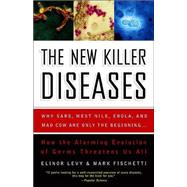
What is included with this book?
| INTRODUCTION: SARS, THE NEWEST KILLER | 1 | (34) | |
| CHAPTER 1. THE CASE OF JEANNIE BROWN | 35 | (24) | |
| CHAPTER 2. THE BIOTERRORISM CHALLENGE: Meeting the Threat | 59 | (37) | |
| CHAPTER 3. OUR AILING PATHOGEN ALERT SYSTEM: Germs from Abroad | 96 | (31) | |
| CHAPTER 4. MAD COW AND CHRONIC WASTING DISEASE: The Strange Horrors of Prions | 127 | (36) | |
| CHAPTER 5. E. COLI GONE BAD: Runaway Bacterial Evolution | 163 | (26) | |
| CHAPTER 6. BACTERIAL RESISTANCE: The Dangers of Antibiotics and Hospitals | 189 | (26) | |
| CHAPTER 7. THE NEXT FLU PANDEMIC: Rapidly Mutating Viruses | 215 | (33) | |
| CHAPTER 8. TB AGAIN: The Fight-Then-Forget Cycle | 248 | (26) | |
| CHAPTER 9. TICKING TIME BOMBS: Chronic Diseases Combining Forces | 274 | (29) | |
| CHAPTER 10. WHAT WE MUST DO | 303 | (17) | |
| EPILOGUE: THE NEW NORMAL | 320 | (13) | |
| NOTES ON SOURCES AND FURTHER READING | 333 | (14) | |
| ACKNOWLEDGMENTS | 347 | (4) | |
| INDEX | 351 |
The New copy of this book will include any supplemental materials advertised. Please check the title of the book to determine if it should include any access cards, study guides, lab manuals, CDs, etc.
The Used, Rental and eBook copies of this book are not guaranteed to include any supplemental materials. Typically, only the book itself is included. This is true even if the title states it includes any access cards, study guides, lab manuals, CDs, etc.
Excerpted from The New Killer Diseases: How the Alarming Evolution of Germs Threatens Us All by Elinor Levy, Mark Fischetti
All rights reserved by the original copyright owners. Excerpts are provided for display purposes only and may not be reproduced, reprinted or distributed without the written permission of the publisher.